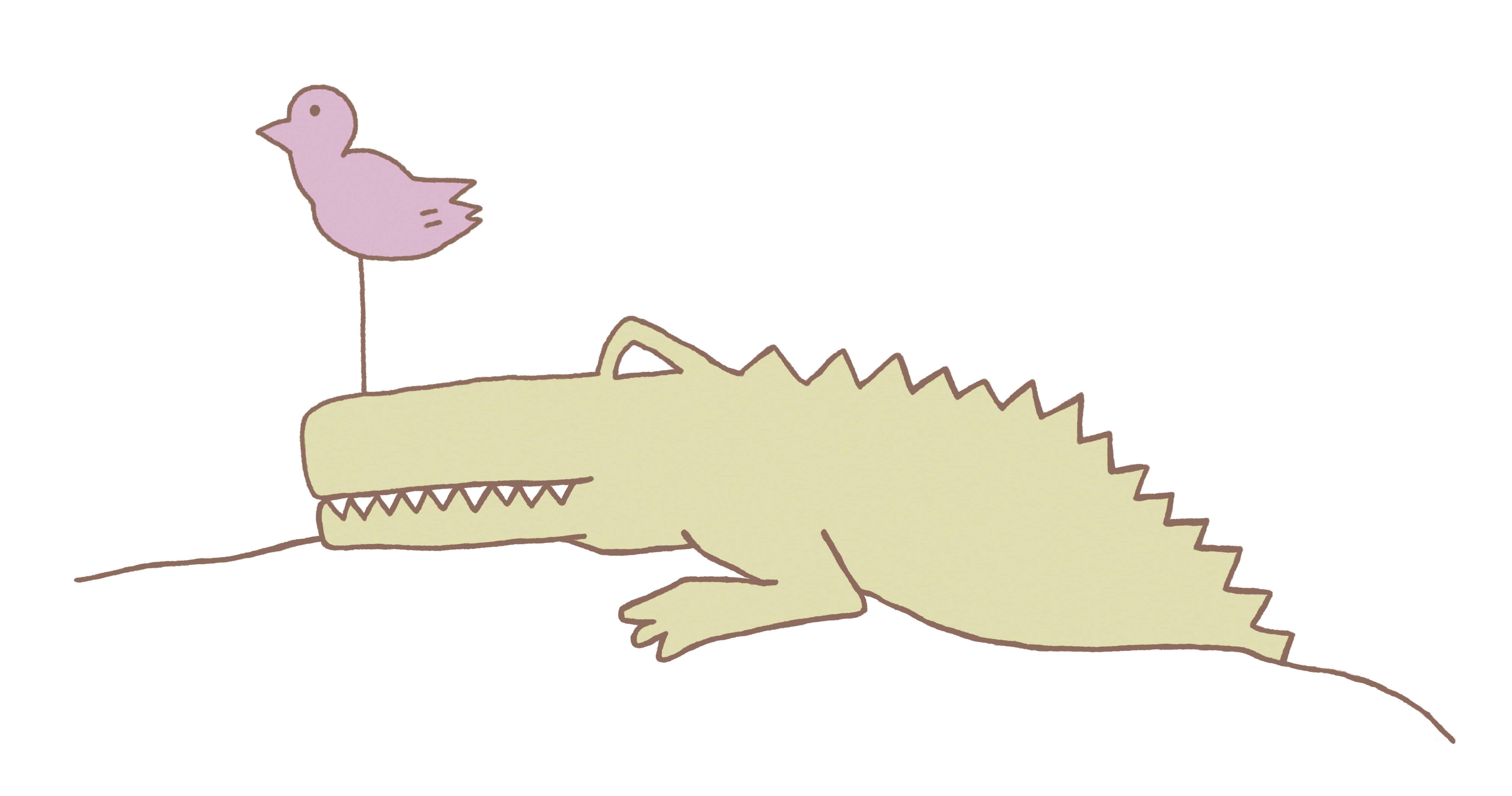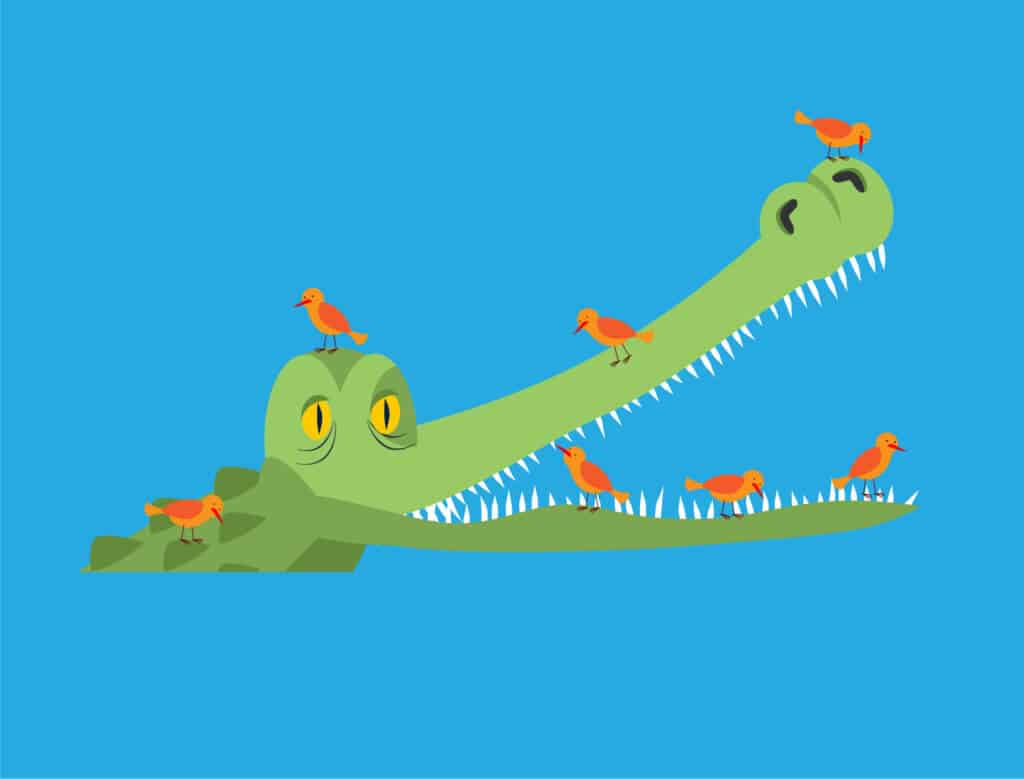Can you imagine how your life might be without your best friend? Who would listen to all of your terrible jokes or have your back any time you got into trouble? As humans, we rely heavily on friends for support, companionship and even when we want to kick back and have some fun. In fact, whether in social or professional spheres, it is generally accepted that forming strong bonds and partnerships with one another can often bring about positive results. But did you know that throughout the animal kingdom such partnerships are also formed, and not just within a single species?
Lifelong relationships
Some creatures forge lifelong relationships with entirely different organisms in order to get through their days a little easier. These types of alliances are known as symbiotic relationships. Which can be separated into three different types:
- commensalism,
- mutualism,
- and parasitism.

Which type are you?
Commensalism is a type of symbiotic relationship between two different animal species whereby only one of the benefits. The other is neither helped nor harmed.
The opposite of commensalism is parasitism which involves one organism gaining from the inter-species relationship but to the detriment of its host. Ticks are a well-known example of a parasite.
Mutualism is the win-win form of symbiotic relationships, with both partners benefiting. Below, I will introduce you to some of the weirdest and unlikely examples of symbiotic relationships within the animal kingdom.
Nile Crocodile and Egyptian Plover
The Nile crocodile is well-known for being hyper-aggressive whenever an uninvited visitor steps into their territory. However, there is one creature that the scaly reptilians will not just tolerate, but is practically welcomed.
Incredibly, the Egyptian Plover aka “Crocodile Bird” will fly into the crocodile’s open mouth and feed upon the decomposing meat stuck between the teeth. The plover gets a solid meal while the crocodile gets some free dental work!
Sharks and Pilot Fish
Similar to the mutualistic relationship between crocodiles and Egyptian plovers, many species of shark have established an unlikely alliance with pilot fish. While the pilot fish helps to rid the shark of parasites and clean away fragments of food caught between their teeth, it benefits from protection against other predators.
The companionship between these two species is said to be so strong that there are even tales of distressed pilot fish following trawler vessels which had captured “their” shark for months.
Coyote and Badger
Back on to dry land we take a look at the unlikely coalition between coyotes and badgers. With speed being their main predatory tactic, coyotes usually rely on open environments to pursue and kill their prey.
However, badgers capture their prey in their burrows whilst digging underground. In some parts of North America, coyotes have been observed waiting outside burrows for ground squirrels fleeing from an underground badger.
While both parties rarely benefit from anyone hunt, the badger also enjoys success from the relationship. Sensing the coyote, some animals remain in the burrow allowing the badger greater opportunity to catch them.

Hermit Crabs and Sea Anemones
Another unlikely marine pairing is that of hermit crabs and sea anemones. By poking the anemone with its pincers and holding it in place, the crab encourages it to attach to its shell. While the anemone bags itself a free ride across the seabed upon the back of the hermit crab, they effectively serve as bodyguards.
Providing shelter and using their barbed tentacles to actively fend off hungry hermit predators.
Colombian Lesserblack Tarantula and Dotted Humming Frog
It might seem odd to think that a creature as sinister-looking as a tarantula could form a symbiotic relationship with an animal it could easily kill and eat. But that is exactly the case in this unlikely partnership between the Colombian lesserblack tarantula and dotted humming frog of South America.
In fact, the large creepy crawly even allows the tiny frog to share its burrow! While the little amphibian enjoys protection from predators, the spider benefits from the frog eating ants which attack and eat the tarantula’s eggs.
Drongos and Meerkats

This incredible partnership between bird and mammal was made famous in the BBC documentary “Africa” hosted by the legendary David Attenborough.
The drongo serves as a lookout for hunting meerkats, giving a warning cry whenever a predator is within the vicinity. Upon hearing the alarm, the plucky little mammals scuttle back to their burrows. Often dropping any prey they have captured to speed up their escape.
Most of the calls made by the drongo are genuine. However, it has learned that by raising false alarms, it can swoop down and pick up a free meal dropped by a meerkat. A master of mimicry, the drongo has even been witnessed making warning calls made by meerkats!
Discover more about love here.
Photos: Shutterstock
Support us!
All your donations will be used to pay the magazine’s journalists and to support the ongoing costs of maintaining the site.
Share this post
Interested in co-operating with us?
We are open to co-operation from writers and businesses alike. You can reach us on our email at cooperations@youthtimemag.com/magazine@youthtimemag.com and we will get back to you as quick as we can.










